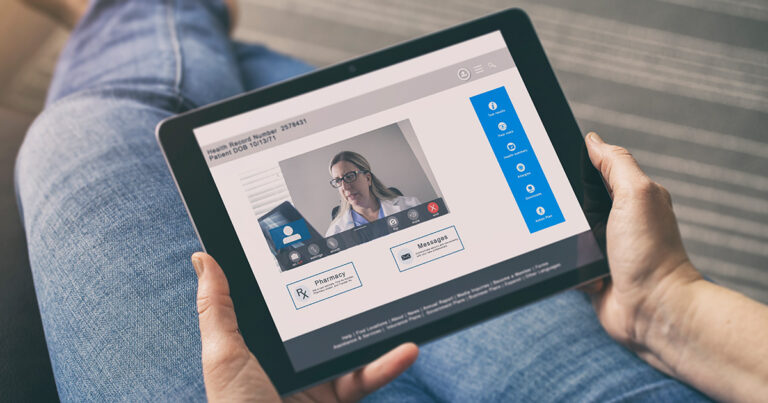Ways to Make Patients Feel Comfortable
Going to the doctor or any kind of wellness appointment can be a nerve-racking experience for a patient.
There can be anxiety over the potential outcomes of the meeting—will there be a negative diagnosis? Will something hurt? Will I feel claustrophobic in a small, confined space with someone making contact with me?
In fact, there is a condition called iatrophobia, which is the medical name for fear of doctors. According to U.S. News & World Report, one clinical director estimates that iatrophobia affects around three percent of the population.
Of course, if you experience an overwhelming fear of going to the doctor to the point where it is affecting your life or creating physical symptoms, then you should see a specialist for help.
But, for the rest of the roughly 97 percent, going to a medical appointment could just cause a minor feeling of discomfort or unease.
Fortunately, there are some steps that providers can take to make the entire experience as comfortable as possible for patients.
Pre-Appointment
Website
From first contact, patients want to feel that they are being treated with respect, they are being properly informed, and that their experience will be as calm as possible.
When dealing with a new patient, it’s probably because they heard of you through word of mouth (which means they’ve already gotten a positive review of your practice—bonus point for you!) or by doing their own research. Because of this, your website is likely the first time the patient interacts with your business.
Having an organized and helpful website that provides easy-to-find information and a welcoming vibe can go a long way. We will dive deeper into this topic in a future article, but for now just keep in mind that your digital presence is an important representation of your practice.
Scheduling / Reminders
Whether you solely use phone scheduling or a combination of both phone and online scheduling, you want the process to be as simple and orderly as possible so it’s easy for the patient.
Taking necessary measures to avoid double booking and making sure there is adequate time between appointments will help avoid daily headaches.
Which leads us to reminders…
It’s a pretty often occurrence that a patient will need to reschedule or cancel an appointment, especially if it was originally scheduled a while ago. However, one incident that happens more often than it should (and we are sure more than you’d like) is a no-show.
The nerve of some people! But, chances are these people aren’t blowing you off on purpose (although that does happen sometimes —what can you do?), but rather they forgot, got distracted, or thought the appointment was another day or time.

To help dodge this annoyance, it’s important to provide patients with reminders of their appointment. IntakeQ gives you the ability to set up customized and automated SMS, email, or voice reminders for upcoming patients, taking the burden off of your staff and reducing the chance of missed appointments.
Preparation
At some point in the process—whether during scheduling, a reminder call, or a separate prep call—it’s important to tell the patient exactly what to expect on the day of their appointment to shrink any stress they may have about logistics.
This should include details about the appointment itself, including:
– Specific directions or parking instructions
– Who they will be seeing
– Details of any tests or procedures (if any)
– Any particular items of clothing that should be worn or avoided
– Pre-appointment guidelines (e.g. fasting)
– Insurance or ID cards needed (if any)
In addition, you should be sending them digital versions of any intake forms so they can complete this task before the appointment, giving them one less thing to think about on the day and drastically reducing wait times.
Appointment
Greeting
On the day of the appointment, keep in mind that the patient may feel a little apprehensive—especially if it’s their first visit to your office.
Just as your website is the first point of digital contact with the patient, your front desk staff is the first point of human contact with the patient. It’s important to have the right person in place: Someone who is friendly, warm, and attentive.
This person should greet everyone coming through the door as quickly as possible, exchange pleasantries, and gather all necessary information. Remember that confidentiality is critical in these situations, so be sure you aren’t speaking about sensitive information in a way where others could potentially overhear—this will help make the patient feel more at ease.
Now this is where using IntakeQ’s digital forms really comes in handy. There should be little, if any, paperwork for the patient to fill out at his or her appointment—because it’s already completed! Thank your patient for taking time to fill out these forms ahead of time, and comment on how it greatly reduces wait time.
Waiting Room
First thing’s first: Make sure the waiting room is clean and organized at all times. This means that first thing in the morning, before any patients start arriving, a front office staff member should be in charge of tidying up any magazines, straightening furniture, and picking up anything left behind from the day before – hopefully you have a nightly cleaning crew that vacuums and empties trash every evening, but if not, it should be assigned to a staff member.
Add small touches to the room that make it feel more personal and less sterile. Maybe put out fresh flowers throughout the week, or a couple family photos, or some bright pillows. Having water available and even a coffee or tea station are nice touches.
Although we hope the day is going smoothly and wait times won’t be long, you still want to have some distractions so patients can entertain themselves. Though magazines are the norm, try to add in some activity-based supplies as well—things like Sudoku and crossword puzzle books help keep worrying minds busy.
Meeting
Whether the appointment is an exam, procedure, or service, the practitioner should be well-versed in proper bedside manner.
It’s important, again, for a patient to feel respected, heard, and comfortable in the situation. Asking questions, being a good listener, and clearly explaining things as they happen are great ways to make sure this is the case.
Sendoff
Once the appointment is completed, be sure that all next steps are explicitly laid out for the patient so there is no confusion. If a follow-up appointment is necessary, suggest scheduling it on the spot and setting reminders for the patient right then and there.
Double check that there are no further questions before sending them off with a smile.
Post-Appointment
Make sure that any follow-up activities are taken care of as swiftly as possible. These can include:
– Scheduling
– Referrals
– Prescriptions
– Additional wellness checks
It’s also a good idea to get feedback from the patient regarding the appointment. Luckily for you, we just wrote a helpful article about exactly that topic. Click here to read Why Feedback is Important for Your Practice (and How to Collect it).
Be sure you are making every patient feel comfortable by following this patient experience checklist.
The Bottom Line
We all feel a little uncomfortable when something is unknown—that’s just human nature. So, to help make patients feel as relaxed as possible, try to keep them informed at all times.
By having a solid process, good manners, and paying attention to detail, you can help keep nerves at bay and make the patient experience a pleasant one.






